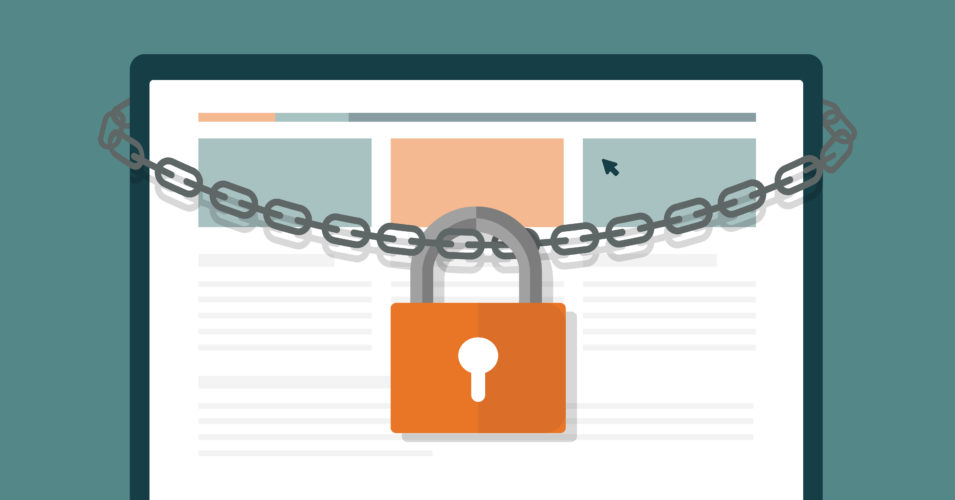Google claims to be able to detect click fraud and that it will credit your account for fraudulent clicks, however, they only catch a small percentage of the actual click fraud. To prevent click fraud it’s necessary to implement an additional layer of click fraud prevention. Unfortunately, some tried-and-true methods of depleting businesses’ budgets have found their way into this era, too, making it challenging for companies to stay on top of their return on investment (ROI). Click fraud is one instance that has sustained itself through the years, often leaving business leaders scratching their heads when their conversions come up short after they’ve spent their hard-earned money on marketing endeavors.
What is Click Fraud?
Click fraud occurs when a person clicks on your paid advertising links to divert or deplete your budget. These ads might be text links at the top of search engine results pages (SERPs), or they can be display banners or videos that your brand is sponsoring.
Pay-Per-Click (PPC) fraud happens anytime a person clicks on your ad when they have absolutely no intention of becoming a customer or doing any business with you.
Companies should be aware that competitors can hire people to click on their ads, thereby costing them money and knocking their ads off the best spots.
What are the Different Types of Click Fraud?
Surprising to many people, click fraud comes in a variety of shapes and sizes. Here’s a look at some of the most common ways click fraudsters may try to get at your accounts.
Bots (Automated Click Fraud)
It’s estimated that about 25% of online clicks come from web crawlers (or bots). Although they’re not always fraudulent, each click does impact the ad spend on your marketing budget. These bots wander around cyberspace looking for information, which is known as scraping or data mining. Today, some services can be found online for a few dollars, with the entire purpose of clicking on ads and changing IP addresses in ways that fool Google into thinking they’re real humans.
Click Farms
Click farms are large groups of low wage paid workers, organized and employed by companies that profit through fraud. A competitor company may hire a click farm in order to deplete your budget. The workers then search and click on your ads over and over again costing you money. Around 13% of click fraud is estimated to come from click farms.
Competitors and Other Manual and Vindictive Paths
You might have competitors who are interested in damaging your advertising spend. These people can spend minutes or hours each day clicking on your ads as a way to deplete your budget and knock you out of the game.
How is Click Fraud Detected?
Unfortunately, anyone on the internet can be a victim of click fraud (which means pretty much any business these days). If you’re running an online advertising campaign, your business is at risk of click fraud. Specifically, click fraud tends to hit two main types of companies the most: small local businesses that have regional competition and larger businesses that offer high-value products or services with an international reach.
If you suspect you might be dealing with click fraud, check your stats. Are you suddenly getting more clicks than usual? Is the geolocation unusual or not relevant to your ads? If so, someone might be inflicting click fraud on you.
Generally speaking, if you’re offing a product or service that’s of high value — and your cost per click (CPC) is above $5 or $10 — you’re probably an ideal target for fraudsters.
What Can You Do to Stop Click Fraud?
Like many things in life, it’s better to be proactive than reactive. Know how to spot the signs of click fraud so you can deal with the situation immediately. Although the following steps aren’t 100% effective, they might help save your marketing budget from a fraud-induced crisis.
1. Be Specific About Your Geographic Area
Being specific about the cities or regions you’re targeting isn’t always effective, but it can serve you better than applying blanket coverage to your campaigns.
2. Exclude Suspicious IP Addresses
If you’ve noticed an IP address that’s behaving suspiciously, be sure to exclude it from having the ability to click on your ads.
3. Optimize Your Ad Display
You can choose when your SERP ad is displayed. In other words, if you know your audience tends to find you on their lunch hour or their commute after work, you can set your ads to only appear during these times. Similarly, if you’d prefer to be seen on mobile devices, you can exclude the ability for desktops and laptops to see your messages.
Why Automated Solutions are the Answer
Don’t feel like you have to fiddle with exclusions and set up filters every day. There is a simpler solution. With the power of automated solutions, it’s easier to tackle click fraud and ensure only real people see your ad, potentially saving you big bucks when it comes to your advertising budget.
Automated solutions track each click on your ad, making sure they’re not coming from a previously identified fraud source. These software’s are designed to score sources based on:
- Behavior
- Location
- Known IP blacklists
- VPNs
- Specific devices being used
If a source is deemed suspicious, click fraud software is designed to quarantine and exclude it from clicking on your future ads.
Do you suspect your business is a victim of click fraud? Our team at Zero Gravity Marketing can help you analyze your marketing campaigns, determine which clicks are genuine versus those with bad intentions, and we can help you to setup click fraud prevention software. Let’s work together to ensure you’re in good shape going forward!









